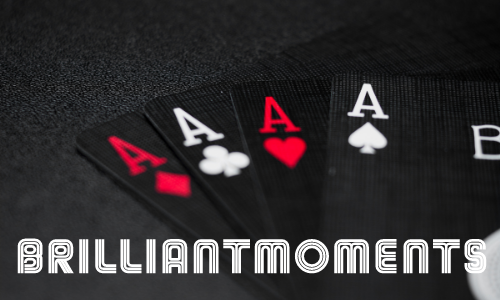
Baccarat is an oversimplified game that started in medieval times as a soothing and simple-to-play game. It’s as simple as betting on a Player or a Banker and hoping your team wins. The name of this popular game is derived from the Italian word “zero.”
The roots of the baccarat game are obscure, despite the fact that its core foundations stretch all the way back to medieval times. Numerous variants have been made using nineteenth-century cutting-edge highlights. According to several stories, this game was invented by fighters during the late fifteenth century Franco-Italian War under the name “Baccara.” France and Italy are thought to be the originators during this time period.
Though many believe Baccarat originated in France, there is compelling evidence that the game originated in Italy. Tarrochi was a popular game in 1300s Italy, and while there is no evidence linking it to Baccarat, Tarrochi could be regarded the archetypal game. Initially, an Italian speculator named Felix Falguierein created a game based on Tarot cards. Baccarat is believed to have evolved in part from non-card games such as the Chinese Pai Gow game, which used tiles rather than cards. This is based on the significance of Pai Gow and the maximum Baccarat score of nine. On the other hand, it is impossible to establish. According to another legend, Baccarat’s origins date all the way back to Ancient Rome and a ritual in which vestal virgins projected a dice to choose their religion. Obtaining an 8 or 9 would require her to deny her virginity; obtaining a 6 or 7 would require her to suffocate in the water; and obtaining any other number would require her to suffocate in the ocean. Even if one or more of these games or practices introduced the number nine into baccarat, this does not explain why the game is now played using cards rather than dice. As a result, we’ll jump to the late thirteenth century, when Marco Polo returned to Italy following his travels.
Prior to the invention of the printing press, card games were unknown due to a scarcity of playing cards. Hand-painting or block-printing with a cut wooden square as a stamp is required. Due to the fact that cards were imprinted in packs of 78 following the invention of the print machine, playing cards became even more widespread. At the time, a game of cards was more readily available. Established games, such as Baccarat, were adapted for card play, and new games created.
Macao, another popular game in Italy at the period, was played with a total of nine players and is now known as Italian Baccarat. It is believed to be the origin of contemporary Baccarat. Le Her may be the genesis of the most experienced form of Baccarat, as both are fixed-number games with the objective of accumulating the biggest possible score. Le Her was a two-person game in which each player received only one card. The worth of the cards ranged from one to thirteen, with kings playing the most prominent and ultimately triumphant role. If a player’s card was not a King, the Baccarat additional card, they could exchange it. In the nineteenth century, another game was established as an ancestor of Baccarat when Hoyle’s Official Rules of Card connected it to the Vingt-et-un games, which is French for 21, thus introducing the monster Blackjack into the record.
Around 1490, the game was introduced to France under the names “Baccarat en Banque” and later “Chemin de Fer.” The game was dubbed Chemin de Fer due to the fact that in France, the cards were dealt from an iron box. Chemin de fer was introduced to England and was dubbed “European baccarat.” Following that, a flood of new baccarat varieties arose.
The game’s previous attraction stemmed from gorgeous peddlers — glamorous women who played on the table with the fewest wagers, drawing cards from the shoe – as well as the fascination of speculators. With the exception of a few casino sites, you won’t find those casino-baccrat-site(카지노사이트) patrons nowadays. Baccarat has grown significantly in popularity over the years, and its ubiquity in Asia has increased its energy and competitiveness while remaining firmly focused on the concept, resulting in a variety of variants with fast-paced ongoing interaction, additional highlights, and side wagers to amp up the excitement.